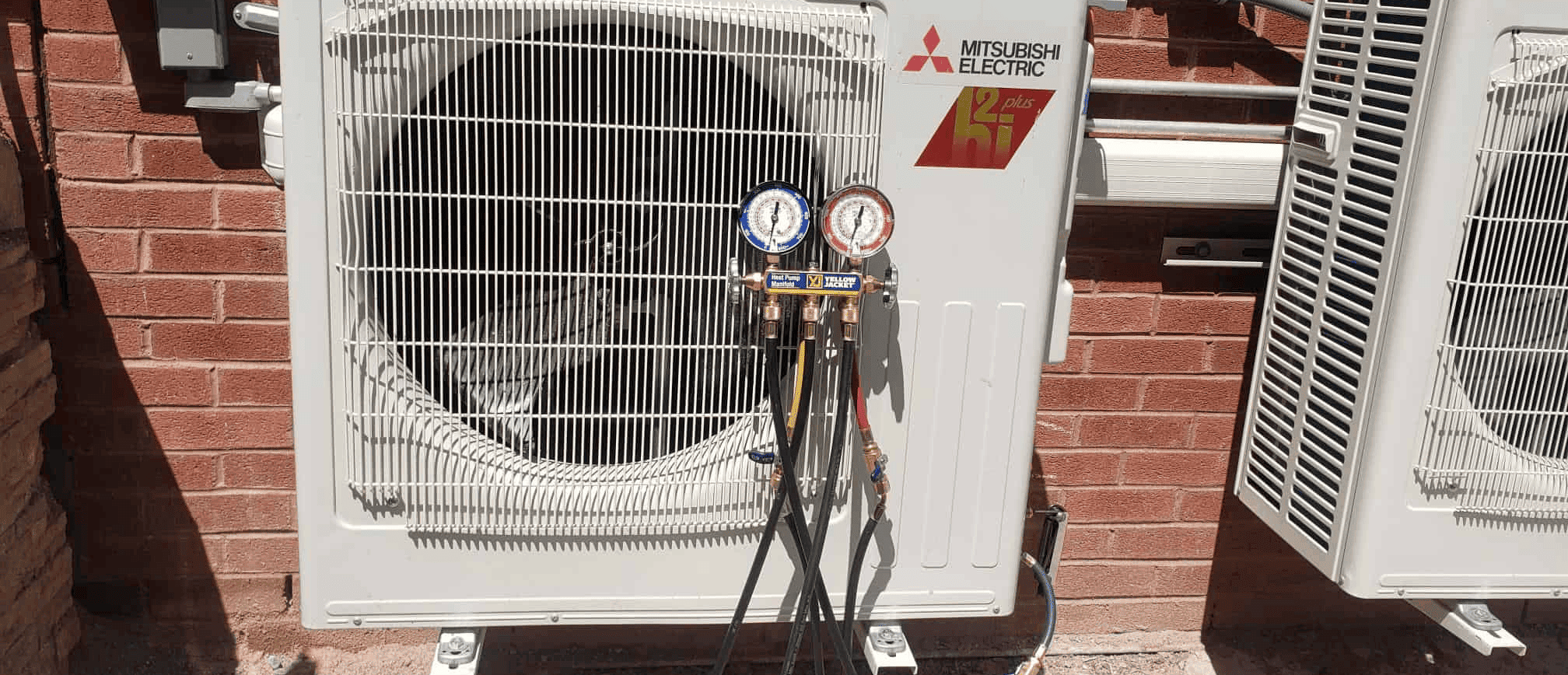Mini Split Mania: Is Ductless Cooling a Must-Have in Every Room?
The Mini Split Craze has rapidly gained popularity, becoming a modern staple in homes nationwide. Characterized by their compact size and efficient temperature control, mini splits offer an alternative to traditional HVAC systems. However, the question arises whether it's necessary to install one in every room. This debate centers around balancing cost-effectiveness with comfort. Supporters argue for the unparalleled individual room control that mini splits provide, ensuring personalized climate settings in each space. Critics, on the other hand, point to the potential for excessive upfront costs and installation complexities. This dilemma leaves homeowners weighing the benefits of customized temperature control against the practicalities of their living spaces and budgets. As the trend continues to grow, the decision to adopt this technology in every room remains a hot topic for discussion among both experts and homeowners alike.
Table of Contents:

Is Ductless Cooling a Must-Have in Every Room?
The choice between multi-zone systems, single-room units, or a blend of both is not one-size-fits-all; it varies based on individual preferences, the layout of your home, and your lifestyle.
Understanding Ductless Mini Splits
Ductless mini splits, commonly known as mini split AC units or mini split systems, represent a modern approach to heating and cooling homes without relying on extensive ductwork. Unlike traditional HVAC systems, these units consist of an outdoor compressor/condenser and one or more indoor air-handling units. These components are connected by a conduit, which houses the power cable, refrigerant tubing, suction tubing, and a condensate drain. This design allows for direct heating or cooling of specific areas in a home, offering a tailored approach to temperature control. This system is particularly advantageous in buildings where extending or installing ductwork is not feasible.
The benefits of ductless mini split systems are multifaceted. One of the primary advantages is their energy efficiency. Since they don't rely on ducts, there's less energy loss, which is a common issue in traditional forced-air systems. Additionally, their flexibility in installation makes them a suitable option for various types of buildings, from new constructions to older homes where installing ductwork is challenging. Mini splits also allow for zoning or the ability to control the temperature in individual rooms. This personalized control leads to enhanced comfort and further energy savings. When compared to traditional HVAC systems, mini splits are quieter, offer a more compact and sleeker design, and provide a more efficient way to manage indoor temperatures, making them an increasingly popular choice in modern homes.
The Room-by-Room Dilemma
Before making the decision to install mini split AC units in your home, it's crucial to thoroughly assess the cooling needs of each individual room. This evaluation involves considering various factors such as the size of the room, the quality of insulation, and the amount of sun exposure the room receives. A larger room or one with poor insulation will require more cooling power, while a room with significant sun exposure might heat up more quickly than others. Additionally, it's important to factor in the specific cooling requirements based on the room's usage. For example, a home office with electronic equipment might need more cooling compared to a less frequently used guest room.
When deciding whether to install a mini split system in each room, several key factors come into play. The room's purpose and the number of occupants significantly influence the need for individual climate control. For instance, a bedroom or a living area with frequent occupancy might benefit more from a dedicated mini split unit than a rarely used storage room. Additionally, the room's location within the house affects its cooling needs; a room facing the sun might require more robust cooling compared to one that is shaded. However, while installing a mini split in every room can maximize comfort by allowing for customized temperature settings, it is vital to consider the associated costs. The initial investment for multiple units, along with installation expenses, can add up quickly, making it essential to balance the desire for comfort with budgetary constraints.

Mini Splits out door units
Multi-zone mini splits provide a significant advantage for homeowners by enabling independent temperature control in different areas or "zones" of a home. This zoning capability is particularly beneficial in larger homes where different rooms or areas may have varying temperature requirements. For example, sunlit rooms may need more cooling compared to shaded areas, or living spaces may require different temperature settings than bedrooms. This ability to customize climate control in each zone not only enhances overall comfort but also contributes to energy efficiency. By only heating or cooling occupied spaces as needed, homeowners can significantly reduce energy consumption and associated costs.
However, there are potential drawbacks to consider when opting for a multi-zone mini split system. One of the main considerations is the higher upfront cost compared to single-zone systems. Installing multiple indoor units for different zones requires a larger initial investment. Furthermore, not every room in a house may require its own zone. For instance, seldom-used spaces like guest rooms or storage areas might not need the same level of climate control as frequently occupied rooms. Despite these considerations, many homeowners have reported positive experiences with multi-zone systems.
The Allure of Whole-Home Mini Splits
Whole-home mini split systems offer a transformative solution for achieving consistent and comfortable temperatures throughout your home. This uniformity in heating and cooling enhances the overall comfort and living experience in each room. Renowned for their energy efficiency, brands like Gree have set a high standard in the mini split market. These systems are designed to consume less energy while maintaining optimal climate control, leading to significant cost savings over time. This efficiency is particularly noticeable when compared to traditional HVAC systems, where energy loss through ducts can be a major issue. While the initial investment in a whole-home mini split system might be higher, the long-term benefits in terms of enhanced comfort and reduced energy bills make it a worthwhile consideration for many homeowners.
When it comes to the costs associated with mini split systems, several factors need to be considered. The installation cost for a multi-room setup can vary significantly depending on factors such as the number of units required, the choice of brand (like Gree mini splits), and the complexities involved in the installation process. Additionally, regular maintenance is essential to ensure the longevity and efficiency of the system. This includes routine cleaning and servicing, which, although an additional expense, is crucial for optimal performance. However, these operational costs are often offset by the energy efficiency of the system, leading to lower utility bills. In the long-term, homeowners frequently discover that the energy savings provided by their mini split system more than compensate for the initial outlay, making it a financially sound investment in the long run.
The Versatility of Single-Room Mini Splits
Single-room mini splits are an incredibly versatile solution for targeted climate control in specific areas of a home, such as additions, basements, or any room that requires individualized temperature management. This adaptability makes them ideal for spaces that may not need the extensive coverage of a whole-home system. One of the main advantages of these single-room units is their ease and speed of installation, which is simpler and faster compared to more complex multi-room systems. Users of single-room mini splits, including customers of RichAir Comfort Solutions, often share their positive experiences, emphasizing the efficiency and convenience of these systems. The ability to precisely control the environment in a single room without affecting the rest of the house is a feature that many find highly beneficial.
When it comes to finding the right balance in home climate control, it's crucial to consider the unique needs of your home. This might involve tailoring a combination of multi-zone and single-zone mini split systems to achieve optimal efficiency and comfort. While multi-zone systems offer the advantage of controlling temperatures in different areas, single-zone systems can be more practical for specific rooms with distinct needs. Consulting with HVAC experts, such as those at RichAir Comfort Solutions, can provide invaluable guidance on strategic installation. These professionals can help determine the most effective setup for your home, taking into account factors like the layout of your house, your lifestyle, and your specific heating and cooling requirements. This tailored approach ensures that your mini split system not only meets your immediate needs but also provides long-term satisfaction and efficiency.
Conclusion
In the dynamic world of mini split systems, the decision-making process boils down to striking the right balance to suit your home's specific needs. The choice between multi-zone systems, single-room units, or a blend of both is not one-size-fits-all; it varies based on individual preferences, the layout of your home, and your lifestyle. Multi-zone systems are ideal for larger homes or for families with diverse temperature preferences, offering the ability to control the climate in different areas independently. On the other hand, single-room units are perfect for smaller spaces or for rooms with unique temperature requirements, such as a home office or a basement. For those needing both widespread and targeted climate control, combining multi-zone and single-room systems can offer the best of both worlds. This approach allows for comprehensive climate management in the home while providing the flexibility to address specific needs in individual rooms.
The ultimate goal in selecting the right mini split system is to enhance home comfort and energy efficiency. While considering your options, it's crucial to factor in the initial installation costs, long-term energy savings, and the specific climate control needs of your household. Consulting with HVAC experts can provide valuable insights, helping you navigate the myriad of options available. These professionals can assess your home's layout, understand your heating and cooling requirements, and recommend a solution that aligns with your goals and budget. In the end, the right choice in a mini split system not only improves the comfort and livability of your home but also contributes to a more energy-efficient, cost-effective way of managing your home's climate. This balance of comfort, efficiency, and cost-effectiveness is what makes mini splits an increasingly popular choice for homeowners seeking smart, modern solutions for their heating and cooling needs.
Back Home - Richair Comfort Solution - Ductless Mini Split Systems Top Quality Installations and Professional Service.
Was This Article Helpful?
RECENT POSTS



